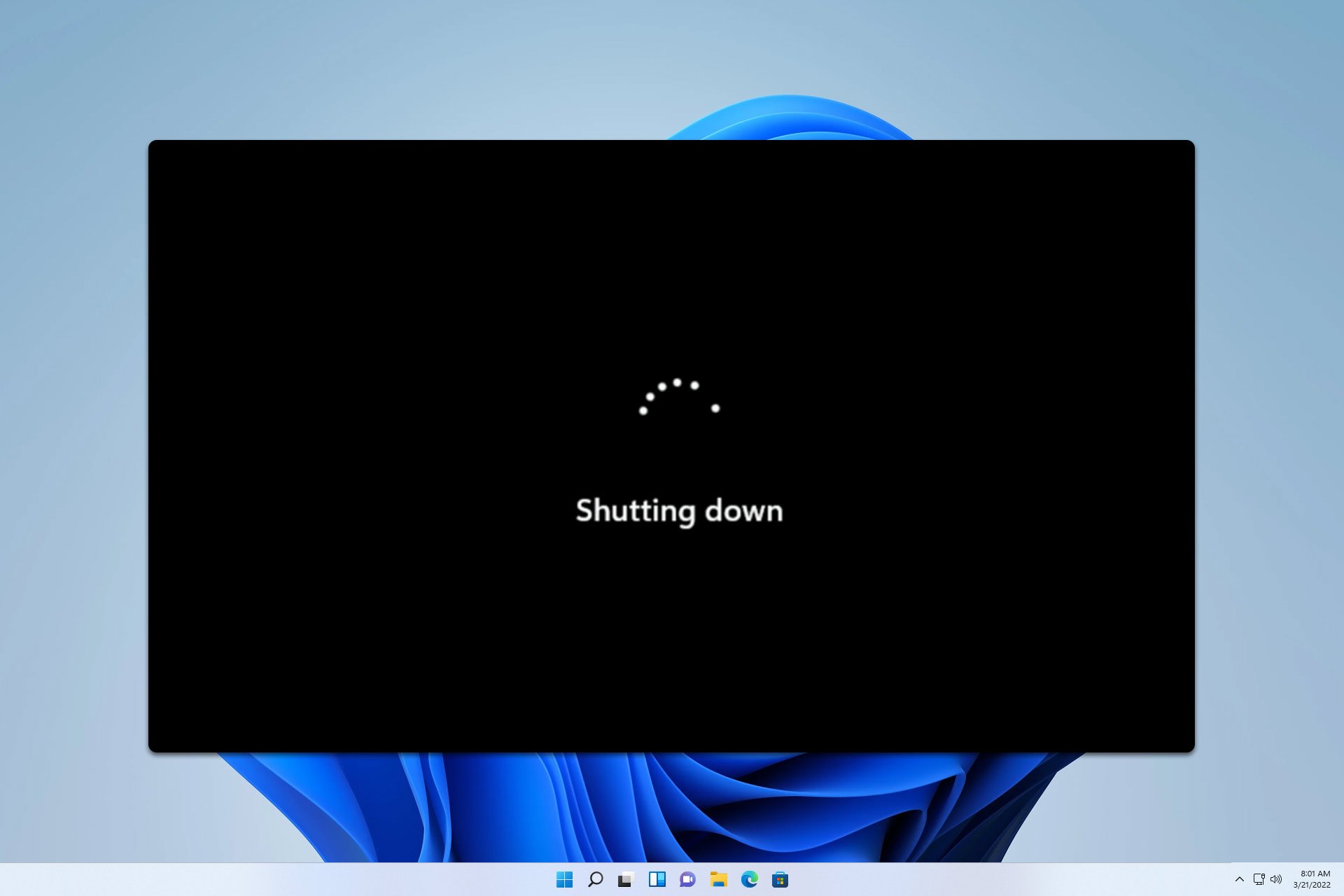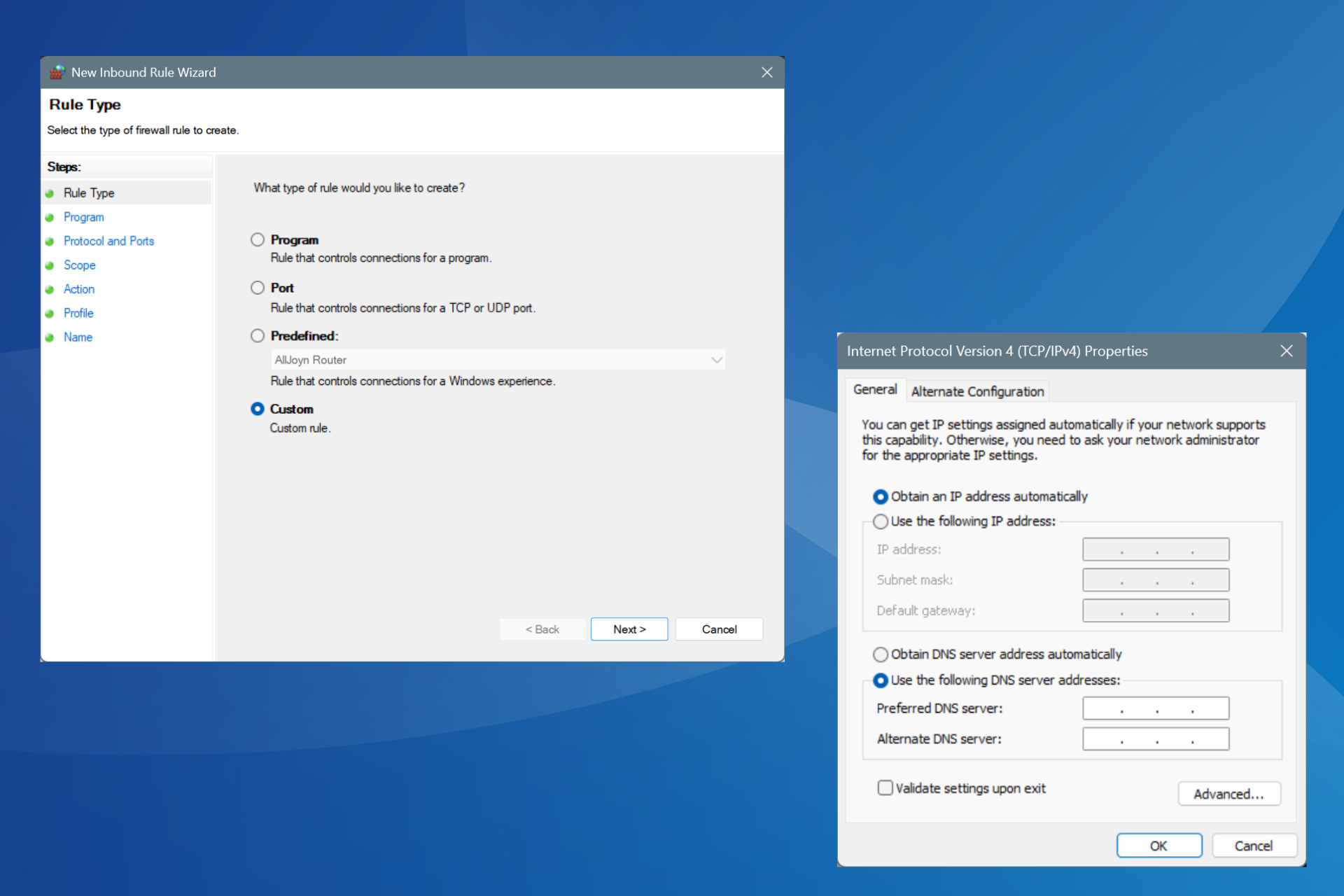ERROR_BAD_STACK 543 (0x21F) [BSoD Fix]
First, check for hardware for errors
6 min. read
Published on
Read our disclosure page to find out how can you help Windows Report sustain the editorial team. Read more

The ERROR_BAD_STACK with error code 543 (0x21F) and description An invalid or unaligned stack was encountered during an unwind operation appears when the system has encountered an issue while trying to handle an error in a program. This issue usually happens when the stack is damaged or improperly organized during an error recovery process.
First, check if the software you are running has bugs or pending updates, which might cause the BSoD error.
How can I get rid of ERROR_BAD_STACK?
1. Run the SFC scan
- Press the Windows key, type cmd in the search box, and select Run as administrator from the list of options to launch Command Prompt with administrator rights.
- To restore or repair the corrupted system files, type the following command and press Enter:
sfc /scannow - Now, the tool will scan and try to repair the corrupted system files. Once the process is complete, restart your PC and check if the ERROR_BAD_STACK appears again.
2. Run the Windows Memory Diagnostic tool
- Save all the work and close all the open programs on your computer. Then, press the Windows key, type memory diagnostic in the search box, and select Open from the list of options to launch the Windows Memory Diagnostic tool.
- Select Restart now and check for problems(recommended).
- Your computer will restart, and the Windows Memory Diagnostic tool will run.
- The tool will run diagnostic tests to look for errors in your system’s RAM. The process may take several minutes to an hour, depending on your RAM and the speed of the device, the
Once the scan is complete, you will get the results on your desktop. If no errors are found, you can proceed with other steps in the guide. However, if there are issues, shut down your PC first, remove RAM, clean dust and debris, reseat it, and rerun the scan. If you still see the errors, you might need to replace one or more memory modules.
3. Update the device drivers
- Press Windows + R to open the Run window.
- Type devmgmt.msc and click OK to open the Device Manager app.
- Expand each system component’s category and look for a driver with a yellow triangle and an exclamation mark.
- Once located, right-click it and select Update driver from the context menu.
- Select Search automatically for drivers.
Windows will try to find a suitable version for your driver. However, if it fails, you can go to the device’s manufacturer’s website and download & install the latest version. Alternatively, you can make things easy by getting a reliable third-party driver updater tool. These tools ensure all the device drivers on your computer are up to date.
4. Uninstall the conflicting drivers
- Press Windows + R to open the Run window.
- Type devmgmt.msc and click OK to open the Device Manager app.
- Locate the recently installed driver, right-click it, and select Uninstall device from the context menu.
- Click Uninstall again if prompted.
Now check if the ERROR_BAD_STACK appears, if yes, restart your computer to reinstall the driver and follow other methods in the guide. Also, try uninstalling the recently installed software to get rid of this BSoD error.
5. Restart your PC in a clean boot environment
- Press Windows + R to open the Run window.
- Type msconfig and click OK to open the System Configuration app.
- Go to the Services tab, place a checkmark next to Hide all Microsoft services and select Disable all.
- Switch to the Startup tab, and click Open Task Manager.
- On the Task Manager window, select all the Enabled items one by one and click Disable, then close the window.
- Back on the System Configuration window, click Apply and OK.
- Click Restart to boot your computer.
In a clean boot, your device will only have the necessary services and startup items. Now, enable the disabled services and startup items one by one and check if you get the ERROR_BAD_STACK. If not, reverse engineer the above steps to restart your PC in normal mode.
6. Reinstall Windows (Last resort)
Before following the steps mentioned below, do these things:
- Back up your important data, including videos, photos, documents, and other files
- Keep your Microsoft account credentials handy
- Keep a list of essential apps, their licenses, and credentials ready
- Get a USB flash drive with 8 GB free space
- Connect your laptop to a charger
Step 1: Create an installation media
- Visit the Windows 11 download website on another PC or your affected PC, if it is working.
- Go to Create Windows 11 Installation media and click Download now.
- After downloading, double-click the mediacreation.exe file to run it and click Yes on the UAC prompt.
- On the Windows 11 Setup wizard, click Accept to agree to the license terms and agreements.
- Select the language, edition, and architecture, and click Next.
- Insert your USB drive; select the USB flash device option on the Choose which media to use screen and click Next.
- Ensure you see the flash drive letter you connected on the Select a USB flash drive page. If you can’t see it, click Refresh drive list, make sure the flash drive is listed, and click Next.
- Wait for the process to complete, click Finish, and safely remove the USB device from the PC.
Step 2: Reinstall Windows
- Plug the USB flash drive into the affected computer, then restart it.
- Your PC will automatically boot to the USB drive; however, you might have to change the boot order from the boot menu if it doesn’t.
- You will get the Install Windows page once the PC boots to the USB drive.
- Select your language, time, and keyboard preferences and click Next.
- Click Install Windows to initiate the process.
Your computer may restart several times, and once it is complete, Windows will boot up and take you to the login screen. You can now log in to your account, check for Windows Updates, and configure your device according to your preferences.
If your device boots to the USB drive after installing Windows, reverse engineer the steps you followed to change the boot order.
Reinstalling Windows can also help you fix other BSoD errors like ERROR_INTERMIXED_KERNEL_EA_OPERATION 324 (0x144) and ERROR_INVALID_HW_PROFILE.
In conclusion, to fix the ERROR_BAD_STACK, you can run the SFC scan to repair system files, check for hardware errors to eliminate the faulty RAM, update the system drivers and uninstall the conflicting ones, or restart your PC in clean boot to identify the cause. If none of these work, you need to reinstall Windows.
If you have questions or suggestions about the ERROR_BAD_STACK BSoD error, feel free to mention them in the comments section below.


























User forum
0 messages